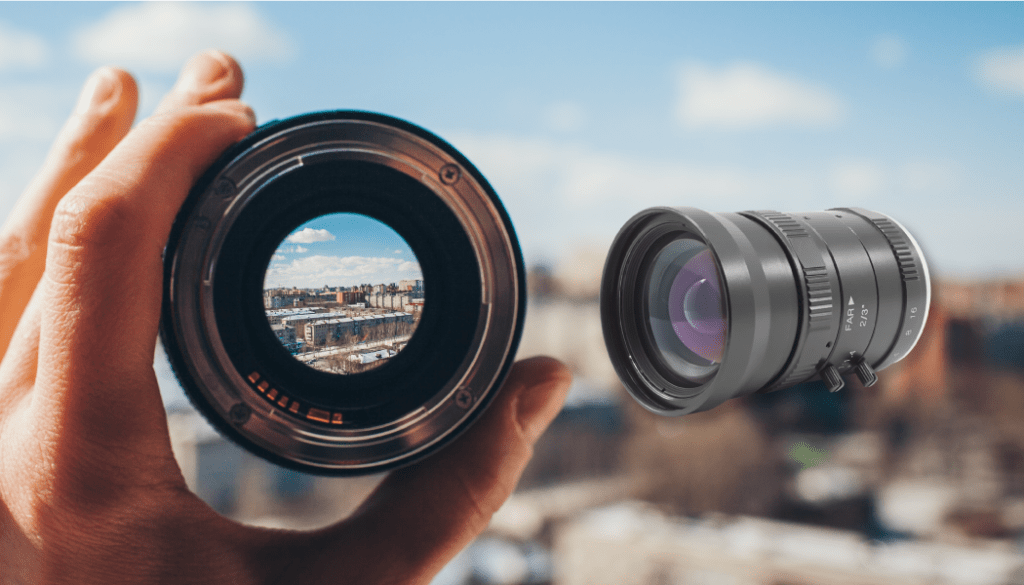
In embedded vision applications, one of the most ignored parameters when it comes to camera integration is sensor-lens matching. It is not enough for the image sensor and the lens to have their own individual features. It is also necessary for the two components of a camera system to ‘align’ with each other for the optimal performance of the embedded vision system.
In this article, let us explore:
Why sensor and lens matching is important?
What are the consequences of not doing it properly?
And finally, the factors you need to consider while matching a lens with a sensor.
The Significance of Sensor and Lens Matching
The lens must be carefully chosen to match the design specifications of the image sensor so that it can accurately capture light and convert it into an electrical signal that is readable by processors. Without this balance, captured images will be distorted or inaccurate.
During the camera integration process, the image sensor is chosen first since it is the most critical imaging component. Then, in most cases, the lens is carefully chosen to match the design specifications of the image sensor so that it can accurately capture the desired field of view (FOV).
Consequences of an Improper Sensor-lens Matching
If the lens and sensor aren’t properly matched, several issues can arise that compromise the quality and functionality of the imaging system. Here are the potential problems and their implications:
A potential increase in cost
Pixelization
Aliasing
Field of view challenges
Improper magnification
Lens vignetting
Lens shading issues
Reduced image sharpness
Compromised dynamic range
Cost: Carefully selecting a lens that is compatible with the image sensor can help organizations avoid inflated costs. In the context of production lines of thousands of embedded vision devices, even a slight cost increase per unit can have a huge financial impact.
Pixelization: When an image sensor’s resolution is lower than the lens’s optical resolution, pixelation can occur and details become more difficult to discern. This can significantly reduce image quality and make it appear as if the image has been viewed through a screen door or a grid. This phenomenon is also called the screen door effect.
Aliasing: Aliasing occurs when the spacing of camera pixels closely matches the spacing between the edges of features in the optical image. This can lead to banding or fringing, causing distortions and other artifacts to appear in images. These artifacts can make certain patterns, such as a striped shirt, appear wavy or distorted.
Incorrect Field-of-view: If the size of the image formed by the lens does not match the size of the image sensor, incorrect field-of-view can occur. This could mean that either parts of the intended scene are not included in the output image, or you have captured more than you wanted, leading to undesired areas in your image.
Improper Magnification: When considering magnification for microscopic imaging, it is important to ensure that the image captures the right level of detail. This is also critical in applications where the zoom feature has to be used to zoom in on distant objects or a particular ROI (Region Of Interest).
Too much or too little magnification can result in missing critical cellular structures in microscopes. Therefore, careful consideration should be given to selecting the correct magnification setting for your sensor lens configuration.
Vignetting:
In embedded vision applications, one of the most ignored parameters when it comes to camera integration is sensor-lens matching. It is not enough for the image sensor and the lens to have their own individual features. It is also necessary for the two components of a camera system to ‘align’ with each other for the optimal performance of the embedded vision system.
In this article, let us explore:
Why sensor and lens matching is important?
What are the consequences of not doing it properly?
And finally, the factors you need to consider while matching a lens with a sensor.
The Significance of Sensor and Lens Matching
The lens must be carefully chosen to match the design specifications of the image sensor so that it can accurately capture light and convert it into an electrical signal that is readable by processors. Without this balance, captured images will be distorted or inaccurate.
During the camera integration process, the image sensor is chosen first since it is the most critical imaging component. Then, in most cases, the lens is carefully chosen to match the design specifications of the image sensor so that it can accurately capture the desired field of view (FOV).

 Admin
Admin
Leave A Reply
Your email address will not be published. Required fields are marked *